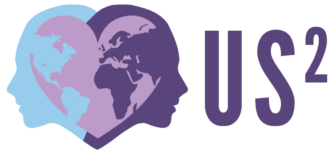In our increasingly interconnected world, media and pop culture play a powerful role in shaping our perceptions and beliefs. However, they are not immune to the influence of ethnocentrism. In this blog post, we delve into the portrayal and reinforcement of ethnocentrism in various forms of media, such as movies, television shows, and music. By critically examining these portrayals, we can better understand their impact on society and work towards fostering more inclusive narratives.
The Influence of Media and Pop Culture
Media and pop culture have immense reach and influence, making them potent tools in shaping public opinion and perpetuating stereotypes. Think about the portrayal of Native Americans in old Western films. These movies depicted them as savage antagonists, perpetuating stereotypes and reinforcing ethnocentrism. The dominant culture was presented as the norm, marginalizing and stereotyping Native Americans in the process. At US², one of our Core Principles quotes the late Dr. Maya Angelou: “Once you know better, you must do better,” and despite recent efforts to improve representation, the current impact on Native American populations highlights the significant impact media can have on shaping perceptions and perpetuating biases.
Ethnocentrism in Movies and Television Shows
Movies and television shows have the power to shape perceptions about cultures and ethnicities. Ethnocentrism can be seen through the casting of actors based on stereotypes, the depiction of cultures as monolithic or homogenous, and the reinforcement of cultural hierarchies. These portrayals can perpetuate biases and create a distorted understanding of different cultures. While the intent was to increase visual representation in media, the impact led to more harm, reinforcing that intentions do not always equal the impact.
For many years, Hollywood has often cast Middle Eastern actors based on stereotypes, perpetuating ethnocentrism and reinforcing biases. Middle Eastern characters were frequently depicted as terrorists, villains, or exotic individuals with little nuance or depth. This not only led to a distorted understanding of Middle Eastern cultures but also contributed to the stigmatization and marginalization of people from this region.
Music and Ethnocentrism
Music, as a universal language, has the potential to break down barriers and celebrate diversity. However, ethnocentrism can manifest in music through cultural appropriation, where elements from marginalized cultures are commodified and stripped of their original meaning. This can lead to the erasure or misrepresentation of cultural heritage and reinforce power imbalances.
The “World Music” genre serves as a concrete example of how ethnocentrism can manifest in music through cultural appropriation. “World Music” is a term that emerged in the Western music industry to categorize and market music from various cultures and ethnicities outside of the mainstream Western music tradition.
In this genre, elements from marginalized cultures are often cherry-picked, commodified, and packaged to appeal to Western audiences, sometimes devoid of their original cultural context and significance. For instance, traditional instruments, melodies, or rhythms from non-Western cultures may be used in a way that dilutes or distorts their original meaning and significance.
The Impact on Society
The portrayal and reinforcement of ethnocentrism in media and pop culture can have detrimental effects on society. While the goal is often to promote cultural understanding and representation, if done incorrectly, promoting diversity without true inclusion can contribute to the marginalization and stereotyping of certain cultures, perpetuate biases and discrimination, and hinder efforts towards social cohesion and understanding. It also limits opportunities for authentic representation and diminishes the richness of cultural diversity.
Promoting Inclusive Narratives
- Diversity in Media: Advocate for increased diversity in media production, both in front of and behind the camera. Encourage authentic representation that reflects the diversity of our world, challenges stereotypes, and provides platforms for underrepresented voices. Some examples are casting diverse actors, empowering diverse actors and directors, tackling stereotypes and misrepresentations, supporting diversity in crew and production roles, and investing in inclusive marketing.
- Sensitivity and Cultural Competence: Encourage media creators to approach storytelling with sensitivity and cultural competence. Research, consult with cultural experts, and engage in meaningful dialogue to ensure accurate and respectful portrayals of diverse cultures. Some methods to consider are research and cultural consultation, having a diverse writer’s room, conducting sensitivity trainings, and gathering audience feedback & community outreach.
- Media Literacy: Promote media literacy among audiences to encourage critical thinking and awareness of ethnocentrism in media. By analyzing and questioning the messages conveyed, individuals can actively challenge stereotypes and biases. A few ways to do this are having and/or providing educational resources, public awareness campaigns, and collaborating with media outlets.
- Supporting Diverse Voices: Support and uplift diverse creators and storytellers, providing platforms for them to share their narratives and challenge dominant cultural narratives. A few options to do this are having mentorship and development programs, having a dedicated content category, and amplifying underrepresented content.
Ethnocentrism in media and pop culture can perpetuate stereotypes, marginalize cultures, and hinder social progress. By critically examining these portrayals, promoting diversity, and supporting inclusive narratives, we can contribute to a more equitable and inclusive media landscape. Let’s harness the power of media and pop culture to foster understanding, challenge biases, and celebrate the rich tapestry of cultural diversity in our global community.




